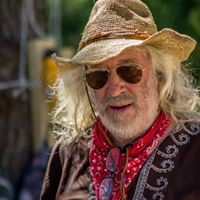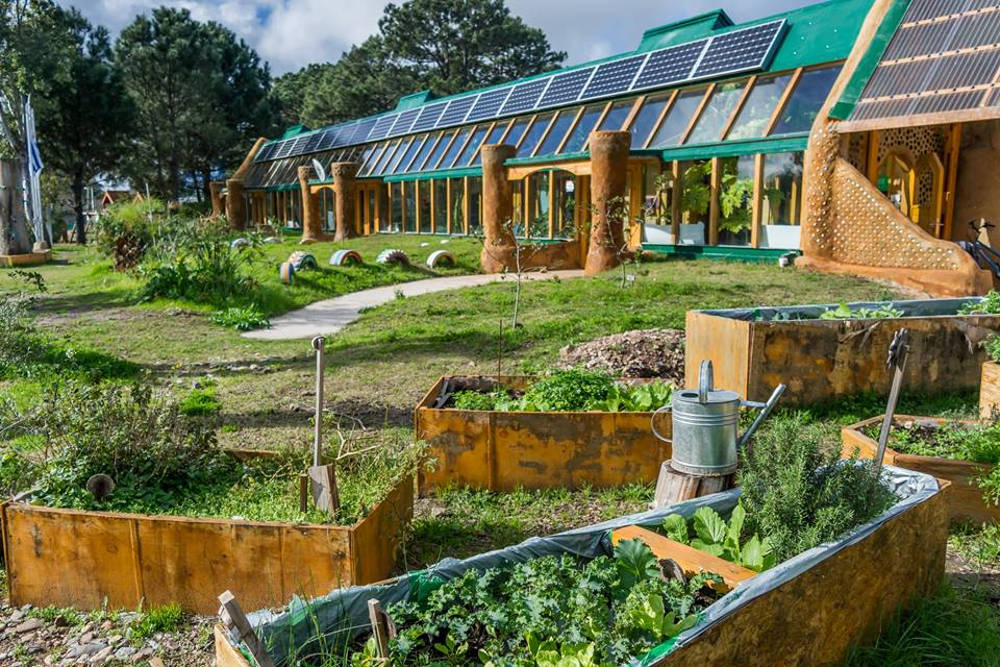Montevideo, Uruguay (VIAnews) – What if someone had already figured out a way of building completely self-sufficient houses?
Apparently, someone already did. Michael Reynolds is a 72-year-old architect who grew up in Kentucky, USA. He has written several books on sustainable housing, founded the world-class Sustainable Buildings company “Earthship Biotecture”, and is the drafter of New Mexico Sustainable Testing Sites.

According to Michael Reynolds, with Biotect it is possible to build self-sustained housing to the point of being able to harvest and filter water, provide comfortable shelter, produce free and clean energy, produce food, reuse waste, and treat sewage safely.
An Eco-friendly environment is a paramount goal in a global resource scarcity scenario. Communities around the globe are embracing this new reality hoping for a revamped perspective into the future.
The architect has been considered a radical environmentalist and he lost and regain his architect license in a battle that took years. The real radical factor is the impact of his work in the people involved around Biotect, mostly volunteers, who made it possible in the first place, but also those who benefit the most. By bringing development where it was needed the most and becoming an igniting point for each project.
The Uruguay Self-sufficient School Project
With a clear philosophy in which, ultimately, everything can and should be used, the Biotecture brought into life self-sustaining construction-social projects, among them, a very particular elementary school.
We’re digging deeper into the first self-sustainable school of Latin America, built in the small town of Jaureguiberry, 80km (50 miles) from the main city, Montevideo, Uruguay.
Tagma is the name of the non-profit organization created to carry out the project. The construction has been supported by República University’s School of Architecture, a private company responsible for 90% of the financing, and Earthship Biotecture.
The public school spans into 270 square-meters with capacity for 100 students. It´s the only elementary school in Jaureguiberry, a small town in the state of Canelones, holding a population of five hundred thousand, surrounded by a privileged natural environment.

The project to build the self-sufficient elementary school began on February 1st, 2016. About two hundred people, volunteers, and students from Uruguay and 30 other countries, took part in the construction which finished successfully in seven weeks.
Approximately 60% of recycled materials (covers, plastic and glass bottles, cans and carton) and 40% of traditional materials were used during the construction.
A hundred percent of the energy consumed by the school comes from the sun. A line of rooftop solar panels and a battery bank manages all the electric devices and light system.
In addition to being autonomous in its energy consumption and producing organic food production in its interior, the school uses rainwater for water consumption, hand washing, irrigation of orchards and cisterns. The sewage treatment, that includes a septic tank also created from recycled materials (in this case tractor covers), and a wetland on the outside of the building.
Both heating and cooling of the building occur naturally, allowing temperature inside the building to remain constant.
The Garbage Warrior
A documentary by Oliver Hodge called “Garbage Warrior” tells the story of Michael Raynolds and his fight to build off-the-grid self-sufficient communities.
“Mr. Reynolds’ constructions, many of them in the New Mexico desert around Taos, inevitably violate local zoning and housing regulations. The movie focuses on his 1997 courtroom battle after the authorities tried to shut down an Earthship community. A charismatic, shaggy-haired renegade with a warm sense of humor, Mr. Reynolds makes agreeable company.” New York Times review.
“I Went to architecture school, the University of Cincinnati. Took all the architectural courses, got my degree and I began right there to think that architecture was worthless” said Raynolds.
Back into the Tsunami zones affected, Raynolds states: “We came to show people how to use the garbage that´s laying all over their town to make buildings that will catch water and contain sewage”.
In 2016, Ashton Kutcher posted on his Facebook page a video from APlus with images of the school explaining how it works, and how it was built. Kutcher wrote: “How many more schools like these can we build?
In August 2017, the self-sustainable school won the Latin America Green Award in the category “Urban Management” among more than 2,400 participants during an event held in Ecuador.







